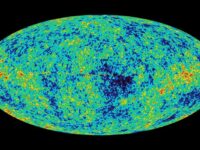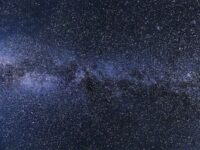We experience three common spatial dimensions in our universe: depth, width, and length — with time sometimes considered as a fourth dimension. Each progressive dimension adds complexity and therefore requires more information to describe. For example, more information is needed to describe a three-dimensional cube than a less-complex two-dimensional square. Although certain theories have suggested the existence of other dimensions, higher dimensions have been incomprehensible due to the lack of sufficient knowledge required to describe them. Most models of the universe, therefore, limit matter to only these three spatial and one temporal parameters — that is, until recently.
Although certain theories have suggested the existence of other dimensions, any other possible higher dimension has been thought to be incomprehensible due to the lack of sufficient knowledge required to describe them — that is, until recently
Synthetic dimensions, an increasingly popular phenomenon, allow the exploration of higher-dimensional concepts by using lower-dimensional materials to model space beyond our known three-dimensional spatial world. These dimensions are experiential models of space in which an extra dimension is created using a variable that isn’t typically thought to be spatial — such as the frequency of light waves, the time delay between pulses, or light polarization — as an additional coordinate on a plane.
The creation of these dimensions combines topology, the study of objects that are preserved with continuous deformations, with photonics, the physical science of generating and manipulating photons (light particles). Topological photonics, a mathematical field of research, uses both geometric and topological ideas to control and design light behavior. The control of light makes it possible to specifically pair each photon state in a degree of freedom (such as a specific frequency in the range of all possible frequencies) with different spatial or temporal properties, or any other variable that lies on a spectrum, to create a new synthetic dimension, which represents the previously incomprehensible higher-dimensions that had been theorized to exist. For example, moving between higher and lower frequencies in the synthetic dimension is analogous to moving left and right, or forward and backward, in a spatial dimension.
In January of this year, a team of scientists led by Yokohama National University professor Aarmandas Balcytis published a paper in which they created the most advanced synthetic dimension to date: the silicon ring resonator. A ring resonator applies guides that can control and split light waves based on specific physical parameters like frequency. This new resonator divides light into a comb-like optical pattern resulting in different photon states that correspond with a one-dimensional plane model: a synthetic dimension of frequency. Controlling how the ring is manipulating the movements of photons along this plane allows for the replication of real-space behavior.
The most revolutionary aspect of this advancement is its size. The synthetic ring resonator, a few millimeters in diameter, is much smaller and compact than previous devices, which have at best stretched 10 meters in circumference. Larger setups are more susceptible to fluctuations, making this new resonator model much more accurate. The compact size also allows for the creation of much more complex models, as it allows for the chaining of a much larger number of rings along the synthetic dimension of frequency.
Chains of multiple synthetic dimensions can create models that extend beyond the typical three dimensions
The next step for Balcytis’ team is to look at further optimization of the experiment and possibly work with two-dimensional materials instead of one. For example, stacking ring resonators could create more complex simulations and enable the creation of more advanced photonic technologies that can be used to explore a seemingly limitless range of effects.
Science Advances (2022). DOI: 10.1126/sciadv.abk0468
Optica (2018). DOI: 10.1364/OPTICA.5.001396





